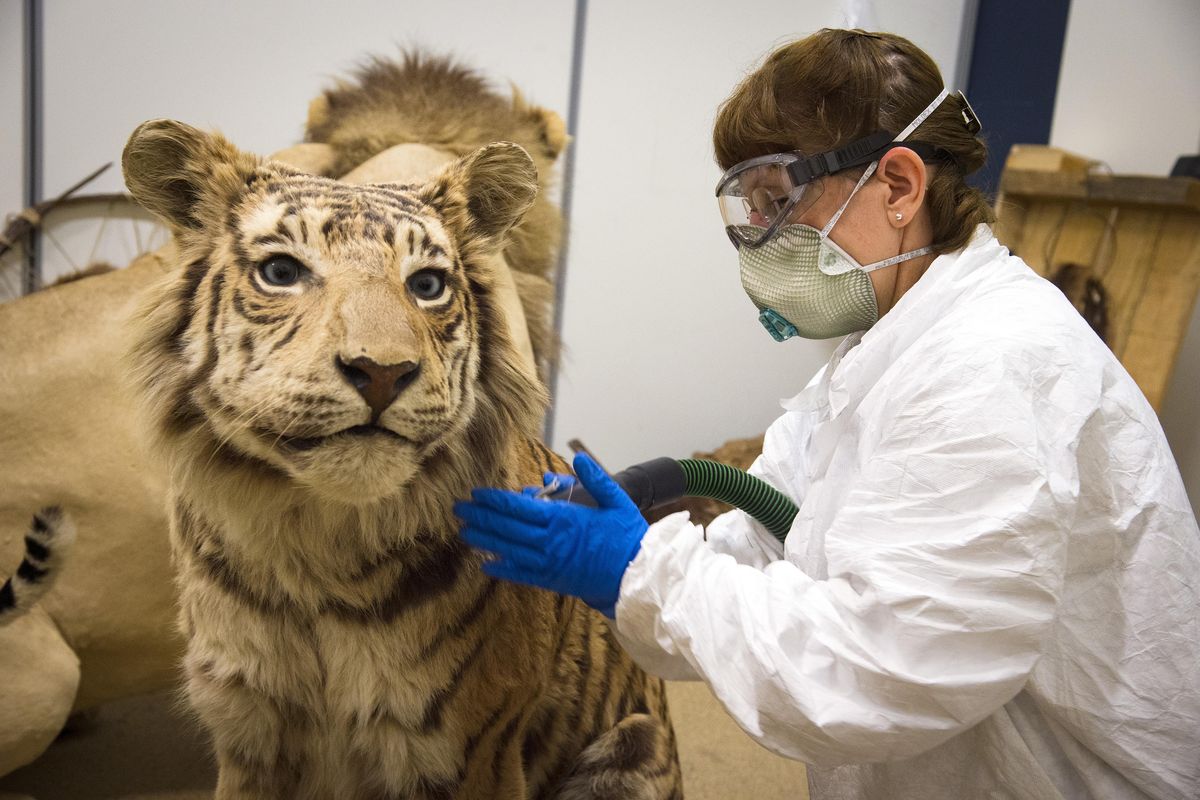New MAC taxidermy exhibit a sort of ‘zoo for the dead’

In just 10 days, John Moredo-Burich will have successfully filled 3,600 square feet of museum space with wild and exotic animals.
Everything from tigers, to cheetahs, to albatrosses – and even a shark – will inhabit the walls of the Northwest Museum of Arts and Culture.
The catch? They’re all “stuffed” – preserved through taxidermy.
“It’s going to be very different,” said Moredo-Burich, interim executive director of the Northwest Museum of Arts and Culture. “I don’t think anyone’s ever done this before.”
From now until the exhibit officially opens July 2, Moredo-Burich – who has two major exhibits under his belt since he started at the museum a year and a half ago – and his staff are working to arrange the paintings, sculptures and, of course, animals preserved by taxidermists.
“I wanted to blow the sidelines completely,” Moredo-Burich said. “Everything is going to be up from floor to ceiling.”
The artwork and sculptures are being arranged in a style found in British castles, with items piled high and grouped together as the aristocracy displayed their wealth and power.
He was inspired by the BBC show “Castles: Britain’s Fortified History.” It’s also where he got the idea to include the hundreds of stuffed animals, many of which are endangered or already extinct.
“This may be the last time (museum patrons) see anything like this,” Moredo-Burich said.
Bridget Freeman is Moredo-Burich’s assistant. In preparation for the show, she was tasked with vacuuming the fur of the stuffed – also called mounted – animals, which were donated or are on loan from private collectors and other museums.
“I’m torn, but they’re just so awesome,” she said. “All I’m trying to do is give them justice.”
“Some of them were completely black,” Moredo-Burich added, referring to the thick piles of dust that caked them, a result of sitting in storage.
While vacuuming the animals, Freeman had to wear protective gear, including a full painter’s suit, goggles and a disposable dust mask.
Prior to standardized methods of preservation, many taxidermists used arsenic to embalm the animals, and many of the animals that will be on display at the museum were preserved this same way.
While the deadly poison can be transferred onto hair and skin, Moredo-Burich said most of the arsenic remnants are located inside the animals – not on the outside, where it’s susceptible to human contact.
“You’ll have to eat the animal for it to do any harm,” he said.
The Centers for Disease Control and Prevention warns that arsenic can be absorbed through the skin, but it is unclear if a case of arsenic poisoning via contact with arsenic-filled stuffed animals has ever been reported.
Still, Moredo-Burich said the displays will be cordoned off with rope, and the animals preserved without arsenic will be available for touching, which he hopes will quell anyone’s desire to touch the other animals.
In addition to the castle-style artwork and sculptures, the museum will feature a “Hall of Babies” – a hallway filled with pictures of baby animals. The staff said they will encourage people to bring pictures of their own baby pets to add to the collection.
“I want a nice room where people can go, ‘Aww,’ ” Moredo-Burich said.
But the real attraction for Moredo-Burich’s third major effort is surely the large, exotic animals that will see the light of day for the first time in years, even decades.
“Taxidermy has become sort of non-politically correct lately,” he said. “The goal now with museums is to have the best taxidermy collections available. We’re in a way becoming zoos for the dead. With so many species becoming extinct, it’s about having the best representation you can.”